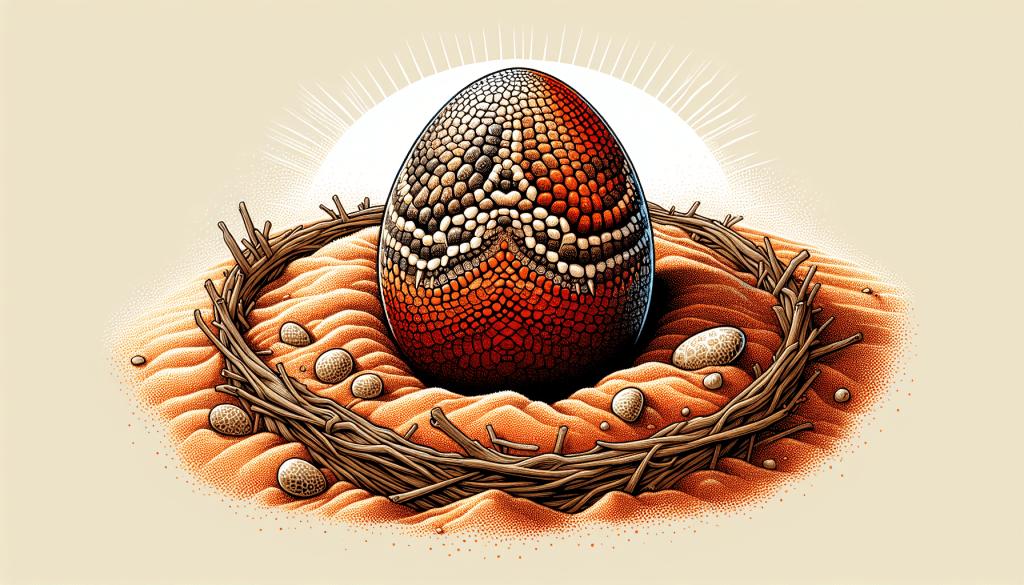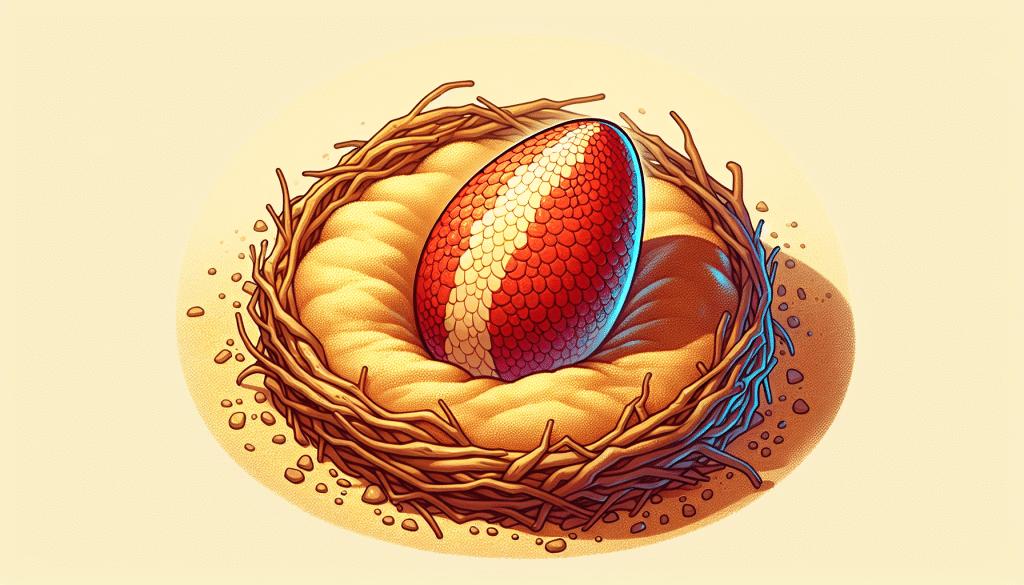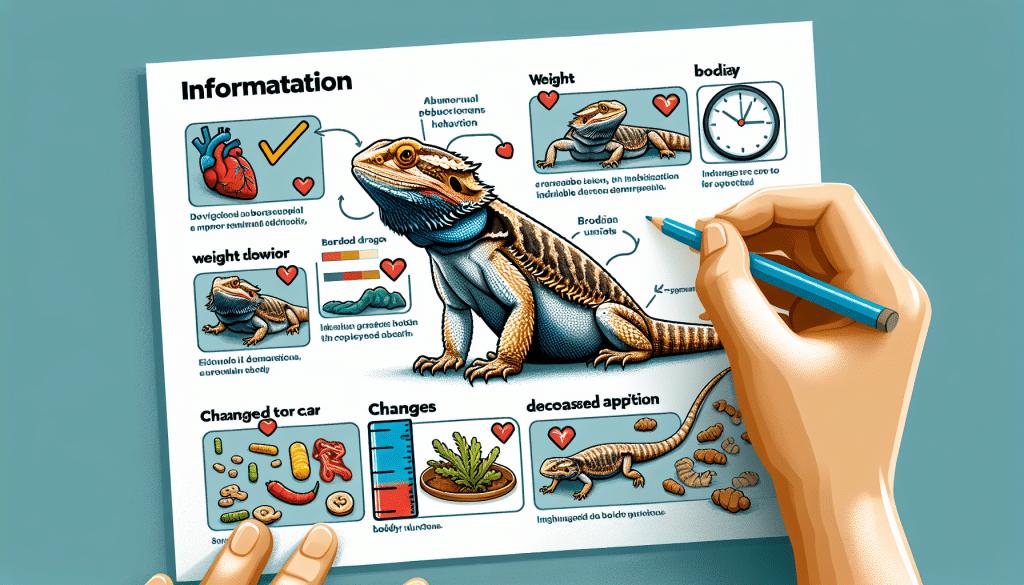Breeding bearded dragons can be a rewarding and fulfilling endeavor for those interested in reptiles. This comprehensive guide aims to provide you with the essential knowledge and techniques necessary for successful bearded dragon breeding. By exploring various aspects such as habitat requirements, breeding season, mating behavior, egg incubation, and hatchling care, this article equips you with the expertise needed to navigate the intricacies of breeding these fascinating reptiles. Prepare to embark on a journey of understanding and mastery, as you delve into the world of bearded dragon breeding.
Understanding Bearded Dragon Breeding

The Life Cycle of Bearded Dragons
Bearded dragons, scientifically known as Pogona vitticeps, are fascinating reptiles with a unique life cycle. Understanding their life cycle is crucial for successful breeding. Bearded dragons go through several stages in their life, starting from egg to hatchling, juvenile, subadult, and finally, adulthood. Each stage requires specific care and nutrition to ensure their healthy growth and development.
Sexual Maturity and Breeding Age
Bearded dragons reach sexual maturity at around 1 to 1.5 years old when they have reached their adult size and weight. However, it is essential to note that just because a bearded dragon has reached sexual maturity does not mean it is ready to breed. Waiting until the dragon is at least two years old ensures physical and reproductive maturity, reducing the risk of complications during the breeding process.
Recognizing Breeding Behavior
Before beginning the breeding process, it is crucial to understand the signs of breeding behavior in bearded dragons. Males may display head-bobbing, arm-waving, and circling behavior when attempting to court the females. Females, on the other hand, may experience a change in behavior, becoming more receptive and displaying a submissive posture. Recognizing these behaviors will help determine when the dragons are ready for breeding and ensure a higher chance of successful mating.
Breeding Seasons and Cycles
Bearded dragons, like many animals, have specific breeding seasons and cycles. In their natural habitat, they typically breed during the spring and summer months when the temperatures are ideal for egg incubation. In captivity, it is possible to manipulate the breeding seasons by carefully controlling the environmental conditions such as temperature and light cycles. This allows breeders to optimize the chances of successful breeding and hatching, even outside the natural breeding season.
Preparing for Breeding
Before embarking on the breeding journey, it is essential to prepare the necessary environment and ensure the dragons are in the best possible health.
Creating a Suitable Environment
Creating a suitable breeding environment entails providing a spacious enclosure with adequate heating, lighting, and hiding spots. The enclosure should mimic the natural habitat of bearded dragons, including enough space for separate nesting areas for the male and female dragons. Additionally, maintaining proper cleanliness and hygiene is vital to minimize the risk of disease transmission between the breeding pair.
Dietary Requirements for Breeding
Proper nutrition is crucial for the health of the breeding pair and ultimately, the successful production of healthy offspring. During the breeding season, it is recommended to increase the variety and amount of food, supplying both the male and female dragons with a balanced diet rich in calcium, vitamins, and minerals. A well-rounded diet consists of a combination of insects, vegetables, fruits, and commercially available reptile supplements specifically formulated for breeding dragons.
Vitamin and Mineral Supplementation
Supplementation plays a vital role in the health and reproductive success of breeding bearded dragons. Providing a calcium supplement with vitamin D3 is crucial to prevent metabolic bone disease and ensure proper calcium utilization for egg development. Additional supplements such as multivitamins can also be beneficial to meet the dragon’s nutritional needs during the demanding breeding process.
Health Checks Pre-Breeding
Before initiating the breeding process, it is crucial to ensure the health and well-being of the breeding pair. Both the male and female dragons should undergo a thorough health examination by a reptile veterinarian. This includes physical examinations, fecal analysis, and, if necessary, blood tests to identify any underlying health issues or diseases. Treating any health issues beforehand will increase the chances of successful breeding and reduce the risk of complications during the process.
Selecting Your Breeding Pair
When it comes to selecting the breeding pair, several factors should be considered to maximize the chances of a successful breeding outcome.
Genetic Compatibility
To maintain the genetic health and diversity of the offspring, careful consideration should be taken in selecting genetically diverse breeding pairs. Inbreeding can lead to a higher incidence of genetic abnormalities and health issues in the offspring. Therefore, breeders should aim to choose unrelated or minimally related dragons to ensure healthier and genetically diverse offspring.
Visual Health Assessments
Conducting visual health assessments on both the male and female dragons is essential before pairing them for breeding. The dragons should demonstrate robust physical traits, such as well-formed limbs, clear and bright eyes, and healthy skin. Any signs of deformities, injuries, or abnormalities should be thoroughly evaluated, as these can impact the successful breeding process and the health of the offspring.
Temperament Considerations
It is crucial to assess the temperament of the breeding pair to ensure a harmonious and stress-free breeding environment. Aggressive or overly dominant dragons may exhibit territorial disputes or fighting behavior, which can lead to injuries or failed mating attempts. Ideally, choosing dragons with compatible temperaments, characterized by calm and cooperative behaviors, will increase the likelihood of successful breeding and minimize stress for both dragons.
Morph and Coloration Preferences
For some breeders, the aesthetic appeal of the offspring plays a significant role in their breeding goals. Selecting dragons with desired morphs, patterns, or colorations can result in offspring with similar visual traits. However, it is important to prioritize health and genetic diversity over appearance when selecting the breeding pair. A balance between desired visual traits and genetic health should always be maintained.
The Mating Process
Once the breeding pair has been selected and the suitable environment has been set up, the mating process can begin. Understanding the intricacies of the mating process is crucial for a successful breeding outcome.

Introducing the Breeding Pair
Introducing the male and female dragons should be done cautiously to prevent aggressive behavior or unnecessary stress. Placing the dragons in neutral territory, such as a separate enclosure or unfamiliar space, allows them to adjust to each other’s presence without immediately engaging in mating behaviors.
Recognizing Mating Behavior
Male bearded dragons typically initiate the mating process by courting the female through head-bobbing, arm-waving, and circling behaviors. The female, if receptive, may perform submissive displays, such as head-down posture and refusal to engage in aggressive behavior. Observing and understanding these mating behaviors is crucial to determine if a successful mating has occurred.
Managing Aggression
During the mating process, it is not uncommon for aggression to occur between the breeding pair. Aggression can lead to injuries and stress for the dragons, potentially impacting the breeding success. Monitoring the dragons closely and providing adequate hiding spots and separate areas within the enclosure can help reduce aggression and ensure the safety of both dragons.
Post-Mating Care
After successful mating, it is essential to provide proper care for both the male and female dragons. The female should be carefully monitored for signs of gravidity, which is the development of eggs within her body. This includes providing a comfortable and secure nesting area where the female can lay her eggs. Providing adequate nutrition and supplementation during this time is crucial to support the female’s growth and egg development.
Incubation of Eggs
Once the eggs have been laid, the incubation process begins. Proper incubation conditions are crucial to ensure the successful development and hatching of the eggs.
Setting Up the Incubation Environment
Creating a suitable incubation environment involves setting up a separate incubator or container with controlled temperature and humidity levels. The incubation container should ideally be filled with suitable incubation substrate, such as vermiculite or perlite, that provides the necessary moisture for egg development.
Temperature and Humidity Requirements
Maintaining accurate temperature and humidity levels is essential for successful egg incubation. The temperature should be within a specific range, typically around 80 to 85°F (27 to 29°C), to ensure proper development. Additionally, the humidity levels should be carefully monitored and maintained, typically between 80% to 90%, to prevent dehydration of the eggs.
Monitoring Egg Development
Regular monitoring of the eggs throughout the incubation period is crucial to ensure their development progresses as expected. Candling, a process of shining a light through the egg to observe the embryo, can provide valuable insights into the health and development of the embryos. Any abnormalities or issues should be noted and addressed promptly to increase the likelihood of successful hatching.
Troubleshooting Incubation Issues
Incubation can be a delicate process, and various issues may arise that can impact the development and hatching of the eggs. Problems such as temperature fluctuations, fungal growth, or infertile eggs should be addressed promptly. Consulting with an experienced reptile breeder or veterinarian can be beneficial in troubleshooting these incubation issues and ensuring the best possible outcome.
Hatching and Early Care
The hatching process is an exciting and critical stage in the breeding journey. Providing proper care for the newly hatched dragons is vital for their health and well-being.
Recognizing Signs of Hatching
Signs of hatching include slight movement, pipping (cracking of the eggshell), and vocalization from the embryo. It is important not to interfere or assist the hatchlings during their hatching process, as they need to complete it independently. Providing a suitable and secure environment for the hatchlings to hatch and recover is crucial.
Creating a Hatchling-Friendly Habitat
Once the hatchlings have emerged, it is essential to provide a suitable and safe habitat for their early development. The enclosure should be properly sized, with appropriate heating and lighting to mimic their natural habitat. Providing hiding spots and branches for climbing will also enhance the hatchlings’ physical and mental stimulation.
Feeding and Nutrition for Hatchlings
Feeding hatchlings a balanced diet is crucial for their growth and development. During the early stages, offering small, appropriately sized feeder insects is recommended, such as appropriately sized crickets or small dubia roaches. Regular dusting of the feeder insects with calcium and vitamin supplements should also be practiced to meet the nutritional requirements of the growing hatchlings.
Handling and Socialization
While it is exciting to handle and interact with the hatchlings, it is important to exercise caution and gentleness. Excessive handling can stress the hatchlings and potentially lead to injuries. Gradually introducing hand-feeding and gentle handling as they grow will help promote positive socialization and tame behavior.
Health Concerns in Breeding Bearded Dragons
Breeding bearded dragons, like any other living organisms, come with potential health concerns and risks. Understanding these health concerns is crucial for maintaining the optimal health of the breeding pair, as well as the offspring.

Common Illnesses and Injuries
Bearded dragons can be susceptible to various illnesses and injuries throughout their lifetime. Some common health issues include metabolic bone disease, respiratory infections, and parasitic infestations. Injuries can occur from aggressive behavior during breeding, inadequate enclosure conditions, or mishandling. Being aware of these common health issues and taking steps to prevent and treat them promptly is essential for successful breeding and the well-being of the dragons.
Preventative Health Measures
Preventative health measures are crucial in minimizing the risk of illness or injuries in breeding bearded dragons. Regular health checks by a reptile veterinarian, proper hygiene and sanitation practices, balanced nutrition, and maintaining appropriate environmental conditions are key components in preventing health issues. Additionally, implementing a quarantine period for newly acquired dragons can help prevent the introduction of diseases to existing breeding stocks.
When to Seek Veterinary Care
Even with the best preventative measures in place, there may be situations where veterinary care is necessary. Dragons showing signs of illness, injuries, or unusual behavior should be promptly evaluated by a reptile veterinarian. Early detection and treatment of health issues can significantly improve the chances of a successful breeding outcome and the overall well-being of the dragons.
Post-Breeding Recovery for Adults
After the breeding process, both the male and female dragons require a period of rest and recovery. This recovery period allows their bodies to replenish nutrients and regain their strength. Providing a suitable and stress-free environment, appropriate nutrition, and regular health checks during this post-breeding recovery phase will ensure the dragons’ well-being and prepare them for future breeding endeavors.
Legal and Ethical Considerations
Breeding bearded dragons brings important legal and ethical considerations that breeders must adhere to for the well-being of the dragons and the responsible management of their offspring.
Understanding Local Wildlife Regulations
Before engaging in bearded dragon breeding, breeders must familiarize themselves with local wildlife regulations. These regulations vary between countries, states, and even municipalities, and may encompass permits, licenses, or restrictions on the breeding and sale of reptiles. Complying with these regulations ensures responsible breeding practices and prevents any legal consequences.
Responsible Breeding Practices
Responsible breeding practices involve prioritizing the welfare and genetic health of the dragons. Breeding should be done with the intention of improving the overall health, genetics, and temperament of the species. This includes avoiding inbreeding, providing appropriate care and enrichment for the breeding dragons and their offspring, and prioritizing the long-term welfare of the animals.
Genetic Health and Diversity
Maintaining genetic health and diversity is paramount in bearded dragon breeding. Over time, inbreeding can result in a higher incidence of genetic abnormalities and health issues. Breeders should aim to introduce genetically diverse dragons to prevent the accumulation of deleterious genetic traits and maintain the overall health and vitality of the population.
The Importance of Record Keeping
Accurate record keeping plays an essential role in responsible bearded dragon breeding. Keeping detailed records of breeding pairs, morphs, hatchlings, health checks, and any other relevant information enables breeders to track lineage, monitor health trends, and make informed breeding decisions. These records also provide valuable information when selling offspring and meeting the expectations of potential buyers.
Marketing and Selling Offspring
Once the offspring have hatched and matured, breeders often face the task of marketing and selling the dragons. Effective marketing strategies, fair pricing, and responsible selection of potential buyers are important considerations in this process.
Effective Advertising Strategies
Effective advertising strategies involve showcasing the unique traits and characteristics of the bearded dragons for sale. Utilizing high-quality photographs, detailed and accurate descriptions, and emphasizing the dragons’ lineage and health can attract potential buyers. Utilizing online platforms, reptile-specific forums, and local reptile expos can also reach a broader audience.
Pricing Your Bearded Dragons
Pricing dragons fairly and accurately is crucial for both breeders and potential buyers. Factors such as genetics, morphs, colorations, lineage, and health should be considered when determining the appropriate price. Continuous research and market analysis can help ensure that prices are competitive, reflective of the dragon’s quality, and reasonable for both buyers and sellers.
Screening Potential Buyers
Screening potential buyers is an important part of the selling process to ensure responsible ownership and welfare of the dragons. Through conversations, interviews, and questionnaires, breeders can assess the suitability and commitment of potential buyers. Providing educational resources and guidance to new dragon owners also contributes to responsible reptile ownership.
Providing After-Sale Support
Offering after-sale support demonstrates a commitment to the well-being of the dragons beyond the sale. Providing new owners with care sheets, answering questions, and offering guidance ensures that the dragons receive proper care in their new homes. This not only promotes responsible ownership but also enhances the reputation and credibility of the breeder.
Common Mistakes to Avoid in Bearded Dragon Breeding
While bearded dragon breeding can be a rewarding and fulfilling endeavor, there are common mistakes that breeders should be aware of and avoid.
Overlooking Health Issues
Neglecting to address or treat the health issues of the breeding pair before and during the breeding process can result in unsuccessful breeding outcomes and compromised health in the dragons and their offspring. Regular health checks and prompt treatment of any health issues are essential for success.
Inadequate Habitat Conditions
Providing an inadequate habitat for the breeding pair can lead to stress, reduced reproductive capacity, and compromised health. Inadequate heating, lighting, nutrition, or lack of appropriate hiding spots can negatively impact the dragons’ well-being and ultimately, the breeding success.
Mishandling the Mating Pair
Mishandling the mating pair during the breeding process can cause injuries and stress, leading to failed mating attempts or aggression between the dragons. It is crucial to practice patience, observe the dragons’ behavior, and avoid unnecessary intervention during the mating process.
Improper Egg Incubation Techniques
Improper egg incubation techniques can result in failed hatching or the development of unhealthy hatchlings. Inaccurate temperature and humidity levels, lack of regular monitoring, or inadequate incubation substrates can all impact the likelihood of successful hatching. Thoroughly researching and implementing proper incubation techniques is essential to avoid these pitfalls.
In conclusion, understanding the intricacies of bearded dragon breeding is essential for breeders to achieve successful outcomes and maintain the health and welfare of their dragons. From understanding the life cycle and sexual maturity to meticulously planning the breeding process, breeders must consider various factors, including genetic health, environmental conditions, and proper care during each stage. By adhering to responsible breeding practices, understanding legal and ethical considerations, and providing after-sale support, breeders can contribute to the long-term health and preservation of this remarkable species.

